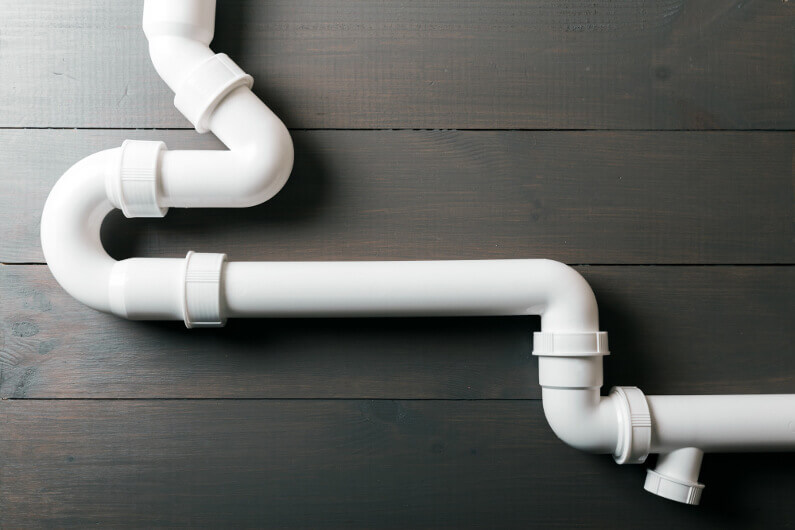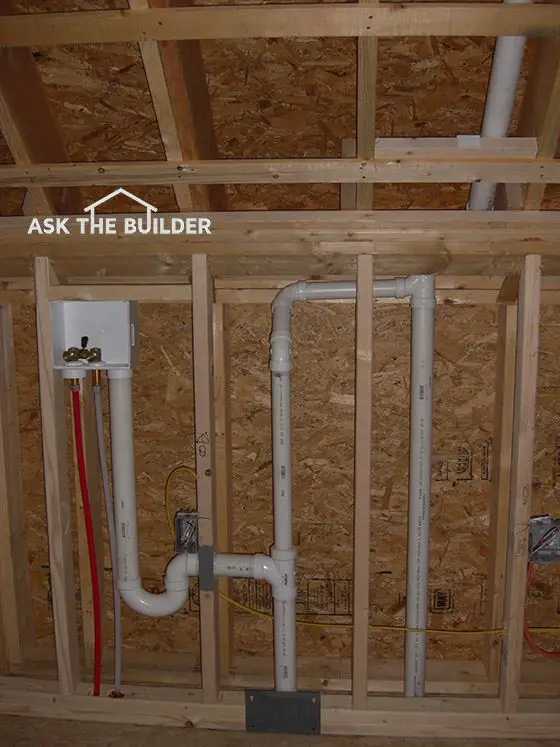The Function of Proper Ventilation in Maintaining Plumbing Systems
The Function of Proper Ventilation in Maintaining Plumbing Systems
Blog Article
The content down below on the subject of Why Plumbing Air Vents Are Important is particularly entertaining. You should check it out.

Appropriate air flow in pipes systems is frequently ignored, yet it is vital for keeping the capability and safety and security of your home's pipes. Ventilation helps regulate air pressure, prevent the build-up of unsafe gases, and make certain the efficient removal of waste. In this overview, we will explore the relevance of proper plumbing ventilation, how it works, and the advantages it brings to your pipes system.
Just How Ventilation Functions in Plumbing Solutions
Atmospheric Pressure Policy
Proper air flow maintains well balanced atmospheric pressure within the plumbing system. When water flows with pipes, it displaces air. Without appropriate ventilation, this variation can create unfavorable stress, causing slow drains pipes or siphoning of water from catches, which can cause unpleasant smells to leak into the home.
Avoiding Drain Gas Buildup
One of the most critical features of plumbing vents is to stop sewer gases, such as methane and hydrogen sulfide, from accumulating within the home. These gases can position major health and wellness threats and are very flammable. Vent pipes allow these gases to leave securely outside.
Assisting in Waste Elimination
Ventilation helps in the effective removal of wastewater by preventing airlocks in the drainage system. When air can move easily with the vents, it allows water and waste to move efficiently via the pipelines, decreasing the risk of blockages and backups.
Benefits of Appropriate Ventilation
Boosted System Effectiveness
Correctly aerated plumbing systems run more effectively, with fewer blockages, faster draining pipes, and much less pressure on the pipes. This efficiency extends the life expectancy of the plumbing system.
Improved Air High Quality
By avoiding sewage system gases from entering your home, appropriate ventilation contributes to much better indoor air quality, making your living atmosphere healthier and more comfortable.
Protecting Against Water Damages
Ample ventilation helps avoid water from being siphoned out of traps, which can lead to drain gases getting in the home and creating water damages with time.
Steps to Make Sure Proper Air Flow
Consulting Plumbing Codes
Always consult regional plumbing codes when developing or customizing your plumbing system. These codes supply the needed standards for proper airing vent and ensure your system meets security criteria.
Normal Inspection and Maintenance
Routine inspections can help identify prospective air flow issues before they become major issues. Upkeep jobs, such as cleaning air vent pipelines and checking for blockages, are essential for keeping the system in good working order.
Expert Installation
For new setups or significant alterations, it's wise to hire a professional plumbing professional. They have the know-how to guarantee the ventilation system is properly developed and installed according to code.
Understanding Air Flow in Plumbing
Ventilation in plumbing refers to the network of pipes that permit air to move through the water drainage system. These vents serve several functions, consisting of regulating air pressure within the pipes, avoiding sewage system gases from going into the home, and aiding in the smooth circulation of wastewater.
Types of Pipes Vents
Key Stack Vent
The major stack air vent, also referred to as the air vent stack, is the main air vent in a plumbing system. It expands from the primary drainpipe align through the roof, enabling gases to get away and fresh air to get in the system.
Branch Vent
Branch vents connect to the primary pile vent and serve private components, such as sinks, commodes, and showers. These vents ensure that each fixture has sufficient ventilation to work appropriately.
Air Admission Shutoff (AAV).
An Air Admission Shutoff (AAV) is a one-way shutoff that allows air to enter the pipes system without the need for a standard vent pipeline expanding via the roofing. AAVs are generally utilized in improvements or locations where installing a conventional vent is not practical.
Indications of Poor Ventilation in Plumbing.
Slow Draining Fixtures.
If your sinks, bathtubs, or bathrooms are draining gradually, it could be an indication of inadequate ventilation. Inadequate air flow can develop a vacuum cleaner result, making it difficult for water to drain appropriately.
Gurgling Seems.
Gurgling audios originating from drains are frequently an outcome of air being sucked with water traps as a result of adverse pressure in the pipelines. This is a clear indication of not enough air flow.
Undesirable Odors.
Sewage system smells inside your home are a red flag that your plumbing system is not appropriately aerated. This can mean that sewer gases are not being effectively aired vent outside, leading to potentially hazardous problems.
Usual Air Flow Blunders.
Insufficient Vent Sizing.
Using small vent pipes can cause inadequate air flow and pressure discrepancies in the system. It's necessary to utilize vents that satisfy the particular demands of your pipes system.
Improper Vent Positioning.
Putting vents also far from the components they serve can minimize their effectiveness. Appropriate positioning makes certain that air can stream openly and effectively via the system.
Ignoring Code Needs.
Building ordinance offer details guidelines for plumbing air flow. Disregarding these codes can lead to a system that falls short to function correctly and may bring about costly repair work or health hazards.
Final thought.
Appropriate air flow is a crucial component of any plumbing system, guaranteeing that it works effectively and safely. By comprehending the significance of ventilation, recognizing the signs of inadequate air flow, and taking steps to maintain your system, you can prevent pricey problems and safeguard your home's air quality.
4 Things You Should Know About Your Plumbing Vents
What Plumbing Vents Are
Also called a vent stack, a plumbing vent is a vertical pipe attached to your drain line that runs through your roof. The plumbing vent pipe, or plumbing air vent, removes gas and odors from your plumbing system and allows fresh air to enter the pipes, helping the water to flow out of the drain pipes.
What Plumbing Vents Do
Plumbing vents have two basic functions. One of which is to allow unpleasant smelling wastewater and sewer gasses to escape your plumbing system instead of entering your home. Plumbing vent pipes are typically located on roofs, away from windows, to ensure the fumes exit the home completely.
The other function of the plumbing vent is to move fresh air into your plumbing system. This helps move water through every plumbing fixture in your house, like toilets and sink drains. Think of the way in which you need to let a little air into the bottle as you pour soda in order to make the drink flow smoothly.
Different Types of Plumbing Vents
True vent: This is the most common vent option. In simplest terms, a true vent is a vertical pipe attached to your drain line that exits through the roof. They often function as the main vent that other fixtures can connect to. Re-vent pipe or auxiliary vent: Attached to the drain line near specific plumbing fixtures, re-vent pipes run up and over to connect to the main vent. Common vent: Two plumbing fixtures installed on opposite sides of a wall are typically tied into the vent stack using something known as a sanitary cross. Wet vent: This venting option operates as a drain pipe and a vent at the same time. Wet vent drainage systems drain water from one fixture while venting the air from another. Although they’ve been used for over 100 years, wet vent systems have only recently been added to the plumbing code in many areas. If you’re planning on installing one in a bathroom remodel, make sure you check your local code prior to construction. Loop vent: For free-standing fixtures like kitchen island sinks, loop vents are ideal. These vent pipes run under the floor, rise from the P-trap, and create a loop inside the cabinet sink. Air admittance valve: An AAV is a one-way mechanical valve typically installed at the site of the plumbing fixture. AAVs allow venting to occur without having to tie into a larger venting system. They’re ideal for venting fixtures where you aren’t able to easily connect to an existing vent system. Common Plumbing Vent Issues
Although vent pipes typically don’t have water flowing through them, they’re still subject to many typical plumbing issues. For example, clogs are one of the most common problems associated with sewer vent pipes. If your vent pipe gets clogged, all of your plumbing fixtures tied into the vent stack will be affected.
A sink with a slow drain that bubbles and gurgles or a strong sewage smell around your toilet are both indicators that your toilet vent pipe is clogged. Because most vent pipes exit through the roof, old leaves, twigs or even a bird’s nest could be clogging the pipe.
Clogs in your vent pipe system cause a buildup of negative pressure, meaning that water won’t be able to flow out of your home very well. It’s similar to putting your finger over the opening of a straw to trap water inside. When you remove your finger, the water is able to flow out of the straw.
If you suspect you have any blockage in your vent, make sure you have a professional come examine the situation. Left unchecked, a blocked air vent can lead to other costly repairs, like leaks and sediment buildup.
Under Pressure
Pipe vents are essential aspects of a home’s plumbing system. Owning a home means learning about all sorts of things you never put much thought into before. But by understanding as much as you can about the important systems of your home, you can keep those budgets intact and those anxiety levels low.
https://www.homeserve.com/en-us/blog/home-improvement/plumbing-vents/

I stumbled upon that piece on Essential Plumbing Vent Pipes: Understanding Their Role when browsing the internet. Sharing is caring. Helping people is fun. I truly appreciate reading our article about What Is a Plumbing Vent and Why Is It Important.
Call Today Report this page